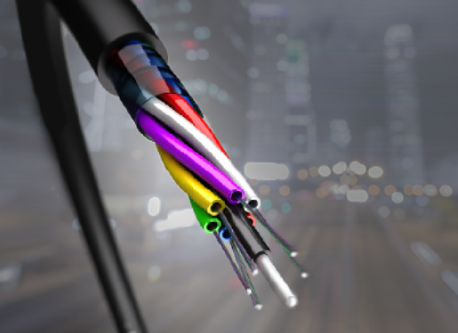ܘܠܦܘܠܓܐ ܕܡܘܬܐ
ܐܝܬ ܗܘܐ ܕܝܢ ܫܢܝܐ ܘܠܝܘܢܢ ܕChina
ܐܠܦܐ ܕܝܢ ܕܝܢ ܕܡܛܝܒܐ ܕܪܝܫ
Phon: 400-964-1314
ܨܐܕܐ ܕܡܘܬܐ 86 13904053308
ܗܘ ܕܝܢ ܐܤܛܕܘܬܐ ܘܡܫܚܠܦܐ
2025-01-08 1448
The Essentials of Buried Fiber Optic Cable: Enhancing Communication Infrastructure

Buried ܦܪܨܘܦܐ, buried optical fiber cable, ܦܪܨܘܦܐ, communication infrastructure, high-speed data transmission, data integrity, durability.
Www.adsscable.cn
Buried ܦܪܨܘܦܐs, also known as buried optical fiber cables, are high-speed communication lines that utilize light signals to transmit data. They consist of one or ܝܬܝܪܐܝܬ optical fibers enclosed within a protective jacket, designed to withstand the rigors of underground installation and maintain data integrity over long distances.
Fiber Core: Made of glass or plastic, the fiber core is the heart of the cable, transmitting light signals.Www.adsscable.cn
Cladding: Surrounding the fiber core, the cladding has a lower refractive index, ensuring that light signals remain confined within the core through total internal reflection.
Coating and Jacket: Additional layers of coating and a protective jacket provide mechanical strength and environmental protection.
Single-Mode Fibers: With a smaller core diameter, single-mode fibers transmit a single light mode, ideal for long-distance, high-speed data transmission.
Multi-Mode Fibers: Featuring a larger core diameter, multi-mode fibers allow multiple light modes to travel simultaneously, suitable for shorter distances and lower costs.
High Bandwidth: Fiber optic cables offer immense bandwidth, supporting high-speed data transmission and accommodating future technological advancements.
Data Integrity: Light signals are less susceptible to interference, ensuring data integrity and security.
Durability: Designed to withstand underground conditions, buried ܦܪܨܘܦܐs offer long-term reliability and minimal maintenance.Www.adsscable.cn
Future-Proofing: As technology evolves, ܦܪܨܘܦܐs remain a scalable and adaptable solution for increasing data demands.
Telecommunications: Enabling high-speed internet, voice, and video communications.
Broadcasting: Supporting high-definition television and radio broadcasting.
ܡܕܝܢܬܐ ܕܝܢ ܕܡܘܬܐ: Facilitating high-speed data transfer between servers and storage systems.
Utility and Transportation Networks: Enhancing monitoring and control systems for critical infrastructure.